The dropouts are a fundamental part of a bicycle frame, enabling the wheel axles to be secured.
A bike has two pairs of dropouts – one at the fork for the front wheel to attach and another at the rear, connecting the frame’s seatstays and chainstays.
There are different styles of dropouts to suit different types of bike, each of which has pros and cons, and there are reasons why you a frame designer may choose one over another.
In this guide, we’ll take you through the common bicycle dropout types, as well as their features.
Bicycle dropout types

While there are four dropout types, the most simplistic way of splitting them is between open and closed.
An open dropout relies on a quick-release or bolted axle, enabling the wheel to slide under or outside of the dropout.
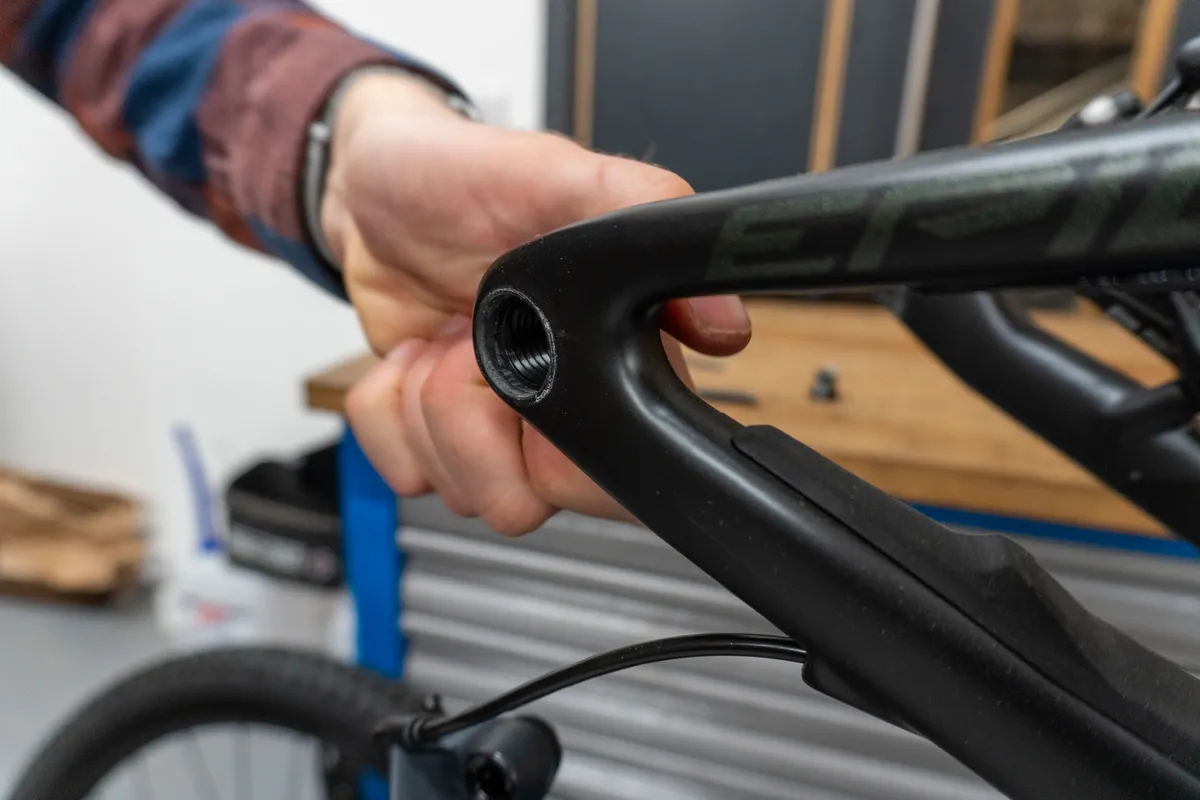
A closed dropout houses a specific insert that the axle threads into. The axle needs to be fully removed for the rear wheel to slide out of the frameset.
There are some rare exceptions, such as Mavic Speed Release, where a brand will spec an open dropout on the opposite side of the thru-axle insert to speed up wheel changes.
Vertical dropouts

On a vertical dropout, the wheels are installed by securing the axle in the dropout, which faces downward.
Unlike a horizontal dropout, the wheel can only be secured in a single position.
Compared to a horizontal dropout, a vertical dropout relies on the gears being set up properly with the wheel’s positioning. If the wheel is installed wonkily, the gears are unlikely to shift smoothly.
Semi-vertical dropouts
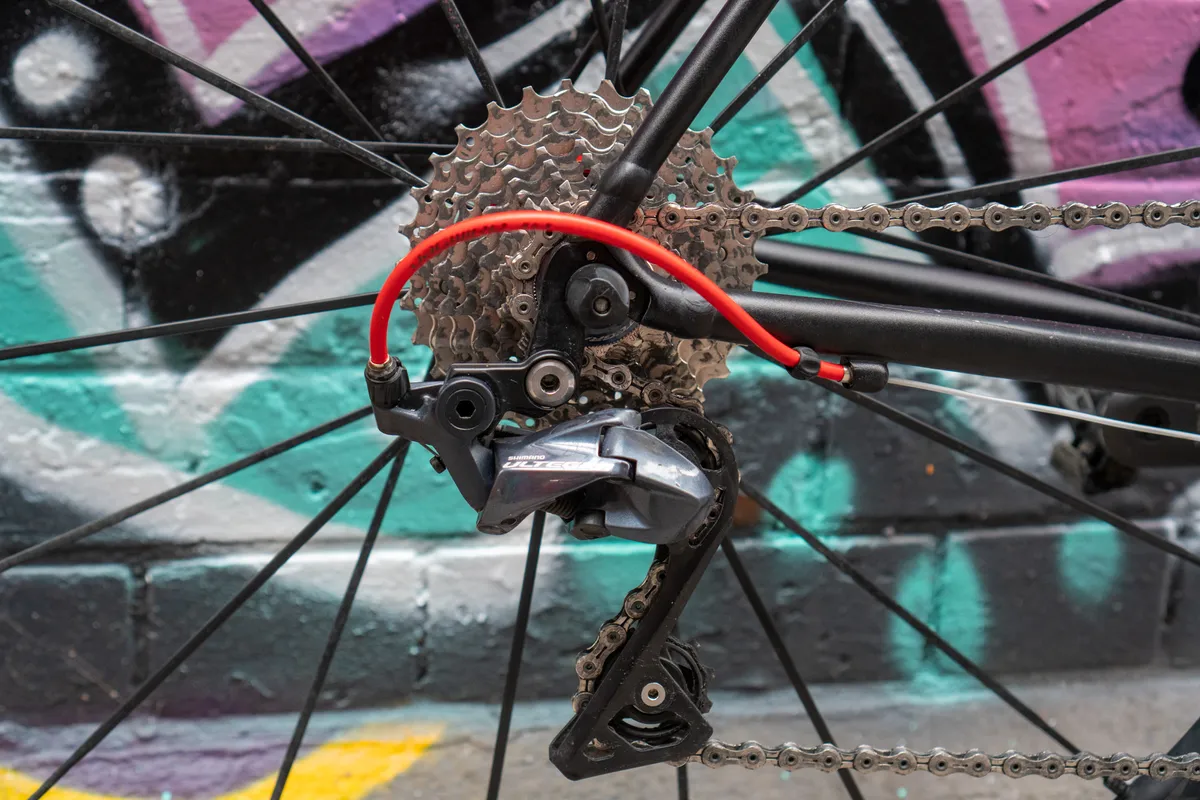
Similar to a vertical dropout, a semi-vertical dropout has more of a cant to it and is the most common type found on many modern quick-release bikes.
They function in exactly the same fashion as a vertical dropout.
Horizontal dropouts

Horizontal dropouts tend to be found on older bikes, but also on time trial bikes, fixies and singlespeed bikes – as well as kids’ bikes.
On a horizontal dropout, the wheel is installed on a horizontal plane into or away from the frame, rather than on a vertical plane.
You can position the axle at different points in the dropout to adjust chain tension. This is important for fixed-gear bikes, where the chain isn’t tensioned by a rear derailleur. The fact you can make adjustments to the chain’s tension means a horizontal dropout enables you to convert your bike to singlespeed or allow for chainstay length adjustment.
You can also adjust the position of the axle in horizontal dropouts to tweak your bike’s wheelbase. A longer wheelbase will make a bike more stable, whereas a shorter wheelbase quickens reactions.

Horizontal dropouts can also be closed, such as Trek’s Stranglehold system, which allows for 15mm of adjustment.
The disadvantages of a horizontal dropout are that it can slip under heavy load and they’re slightly more finicky to remove and install a wheel into.
Thru-axle dropouts
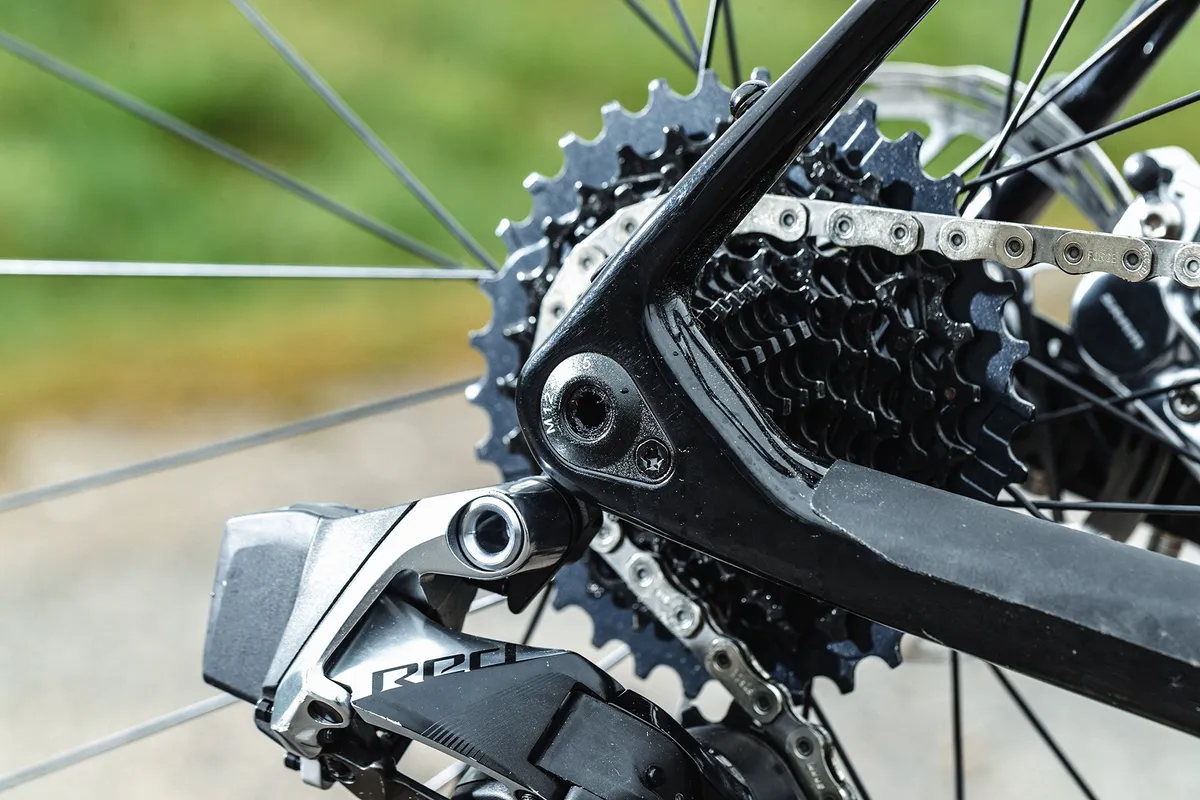
A thru-axle dropout is a fully closed structure with a threaded insert bonded into the dropout. The insert is what the thru-axle threads into.
Thru-axles were first introduced on mountain bikes to enable a much more stable and rigid connection between the wheel and dropout, with a significantly reduced chance of it loosening and falling out on a ride compared to a quick-release skewer.
It also means the wheel is always installed straight and there’s less chance of your disc brake rotor rubbing on the brake pads.
Not only have they become one of the main mountain bike axle standards, over time they’ve become the de facto road bike axle standard too.
Bicycle dropout features
There’s more to a dropout than meets the eye – here are some of the common features you may find on them.
Lawyer lips

Lawyer lips (also known as lawyer tabs) are tabs on the inside face of both dropouts that protrude slightly.
These are designed to stop the wheel from falling out if it isn’t secured properly and catch the end of the skewer.
Eyelets

Some dropouts feature eyelets, so you can mount panniers, mudguards or even bike trailers.
These are often found on bikes designed around versatility, such as touring bikes or gravel bikes.
Derailleur hangers
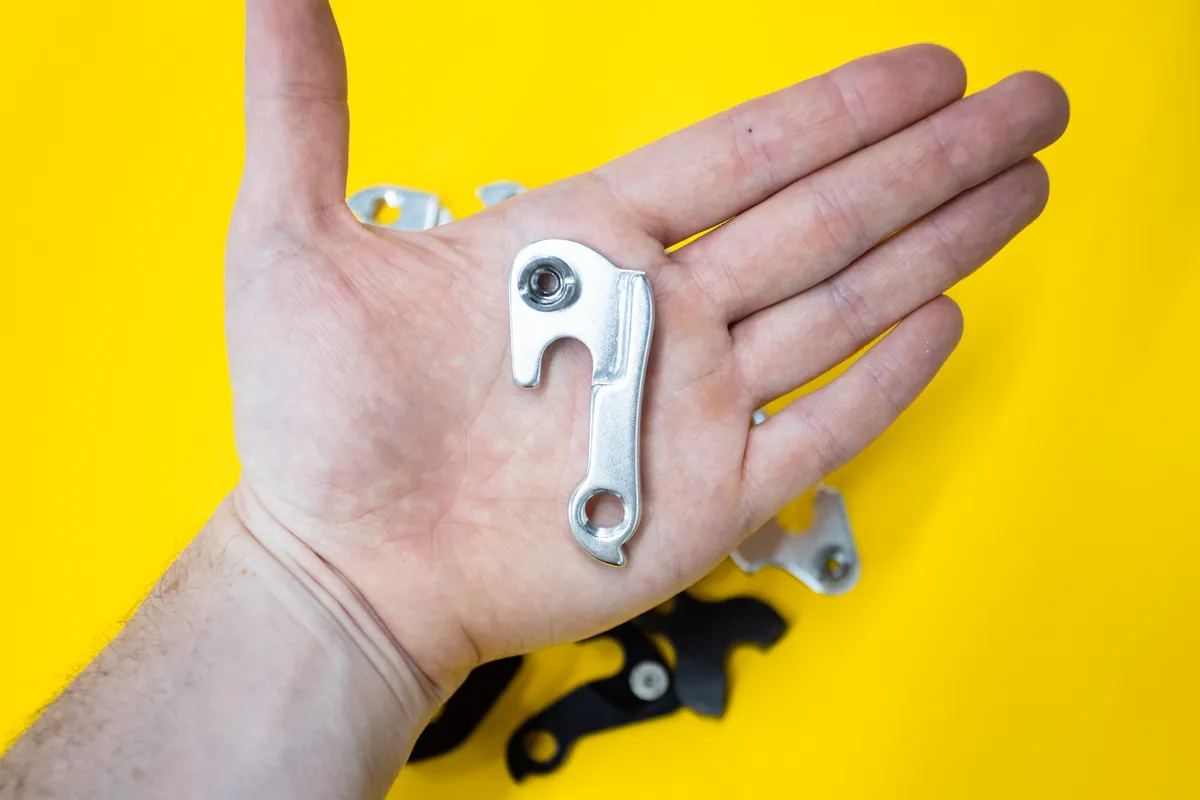
If your bike has gears, there will be some form of derailleur hanger for the rear derailleur to attach to. This is what enables the gears to shift optimally.
On some bikes (primarily older ones), the hanger forms part of the dropout.
The problem with this is that if the dropout bends, the frame may be compromised. You can try to gently bend it back using heat, but the dropout will be weaker in structure than it was before. You have to be very careful with how much heat you apply to avoid misshaping the hanger, so there’s an element of risk.

On the vast majority of bikes now, though, the derailleur hanger is a separate piece that installs into specific holes fashioned into the dropout. The derailleur hanger is specific to your frame, and the number and/or positioning of the holes differs between brands.
With this design, the derailleur hanger is a replaceable and sacrificial part that's designed to bend or break in an impact. The rear derailleur simply attaches to it.
SRAM tried to unify derailleur hanger standards when it introduced its Universal Derailleur Hanger. Many mountain bikes and some gravel bikes now use this standard.
Chain tugs
Chain tugs are sometimes used to prevent the rear wheel slipping and keep the chain tight on horizontal dropouts. Examples include the Surly Hurdy Gurdy chain tensioner.
Adjustment screws
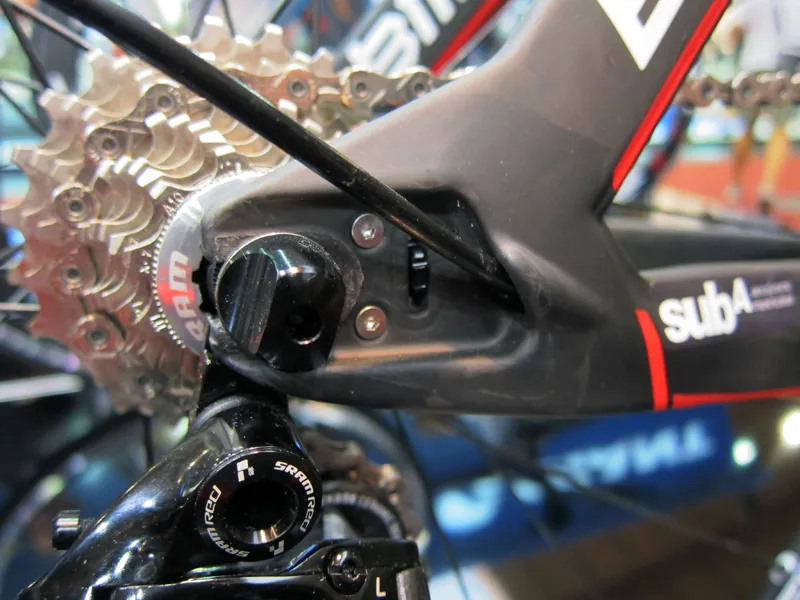
Some dropouts feature adjustment screws, mainly on horizontal dropouts, and this is to set the wheelbase (the distance between the wheel axles) longer or shorter. They can also be used to install wider or narrower tyres.
You set them to a certain position so you don’t have to reset the wheel’s position each time.
Flip chip dropouts
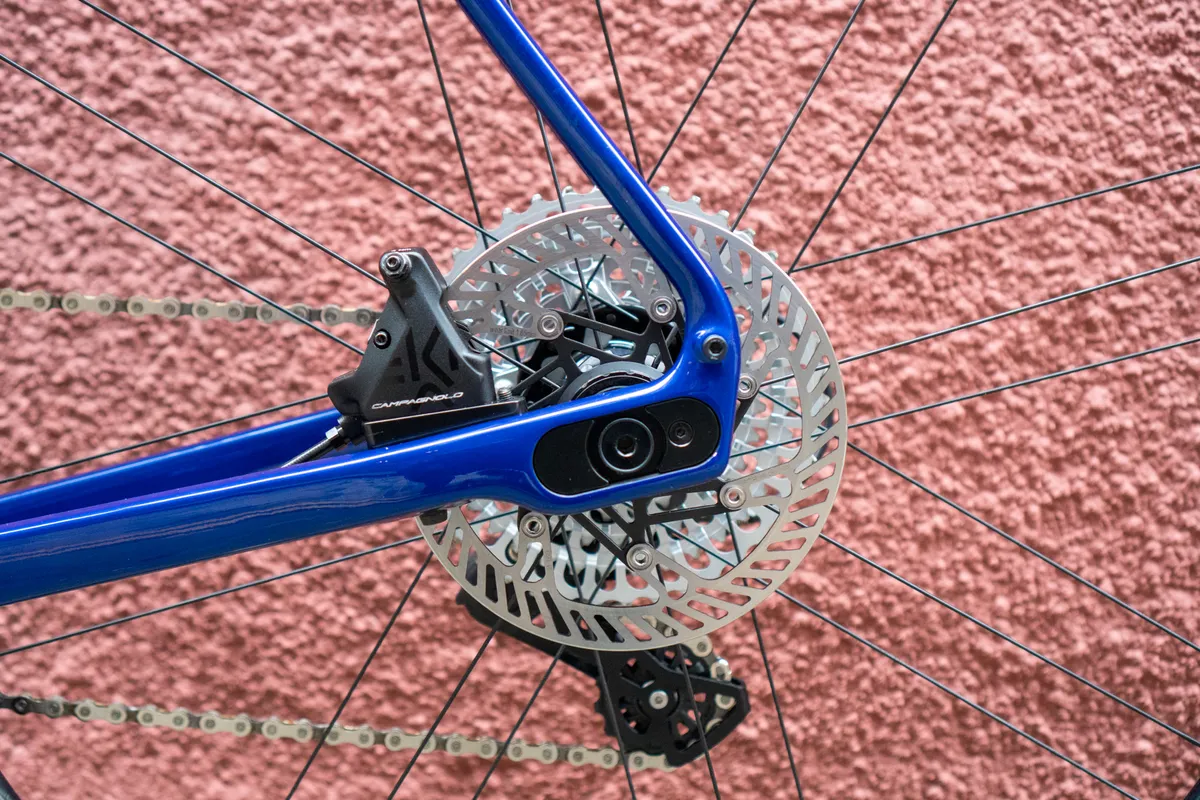
Some bikes feature flip chip dropouts, which are common on mountain bikes and even some gravel bikes.
These enable you to alter the bike’s geometry, simply by turning the dropout the opposite way to increase or decrease the bike’s wheelbase.
Brands go about this in different ways, so there can be some subtleties between manufacturers.
On some designs, the brake caliper has a sliding mount so you don’t need to realign your brake each time you change the flip chip’s position.
Dropout adaptors
A dropout adaptor enables you to convert between different designs. For example, you may have a bike with a vertical dropout but want to convert it to a fixed gear, so you'd require an adaptor with a horizontal design.
